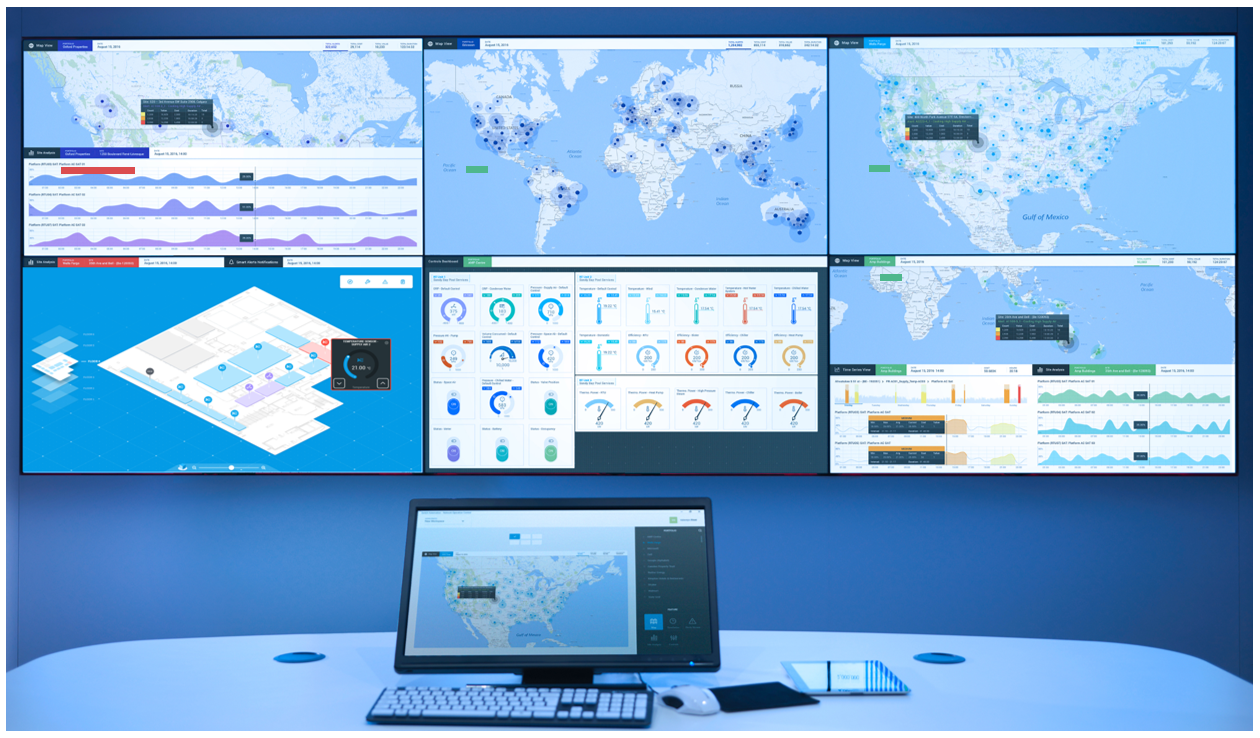
By Peter Rake, global director of Integration at Switch Automation
Just as today’s homeowners want to implement Smart Tech solutions for sustainability and security, commercial real estate owners and operators want PropTech in their buildings to support digital facilities management (DFM). Smart building solutions are helping operations teams evolve from reactive to proactive to ultimately predictive maintenance. This new approach to building management significantly enhances energy efficiency, maintenance and occupant comfort.
“The most successful smart building solutions not only align with the owners’ and investors’ need for efficiency, but also provide an increasingly focused objective for the organizations that occupy their space – sustainability,” noted Newmark Knight Frank Associate Director Josh Pons. “A number of our clients are triple bottom line companies. In their site selection process, we place a heavy focus on criteria like walkability, building wellness amenities, and sustainability.”
Traditionally building data was siloed, limiting access and insights to specific departments or personnel. An accounting team might oversee utility billing while HVAC maintenance is addressed by the onsite facilities team. Storing valuable building data in disparate silos creates an administrative headache and increases the risk of delays, data corruption and inaccuracies when it comes time to analyze and report.
Solving a decades-old problem
Internet of Things (IoT) sensor technology is more affordable than ever and can give owners and operators deeper visibility into building performance – far beyond the capabilities of a traditional building management system (BMS). But separately, they can intensify the pain of siloed data.

Connecting IoT sensors with a unified IoT software layer – a true smart building platform – forms a data-sharing ecosystem. This allows FM teams to monitor, analyze and optimize occupancy, lighting, CCTV, air quality, energy consumption, space utilization and much more.
Empowered with aggregated, real-time data, building managers can ensure high occupant satisfaction, reduced costs and ultimately improving tenant retention by preventing compromised building performance and quickly resolving work orders.
A foundation for optimal building performance
Using a single source of truth for building performance, facilities managers can benchmark performance data. Layering diverse information from multiple sources (like HVAC, occupancy and temperature) helps FM teams not only measure and track performance from the portfolio level down to individual sensors, but quickly uncover the root causes behind site issues.
Older buildings have the most to gain by integrating with smart building technology. These properties frequently remain unmodified for decades with little or no digital controls to produce data. Moreover, dated structures often contain equipment that is poorly commissioned, operating inefficiently or not at all.
New construction projects can also benefit significantly from PropTech. Connecting a building on Day One gives owners the ability to validate performance by investigating whether systems are operating as designed.
Taking Green Certification to the Next Level
Traditionally, the data required for building certification lived in siloed spreadsheets and software applications across different departments. An effective smart building platform provides a place to store utility and sub-metering data across all built assets giving way to portfolio-wide consolidation and reporting. This vastly simplifies green building certification processes like LEED and fosters high performance transparency.
CASE STUDY: Switch Automation & Oxford Properties
Switch Automation is a global real estate software company that helps property owners and facility managers reduce operating costs, improve energy efficiency and deliver exceptional occupant satisfaction. Switch’s comprehensive smart building platform integrates with traditional building systems and IoT technologies to analyze, automate and control assets in real-time.
Global real estate developer Oxford Properties implemented the Switch Automation Platform to leverage their data and optimize building performance across their portfolio. This smart building solution provides real-time visibility into operations, supporting Oxford’s adoption of data-driven strategies across their IT and OT teams.
First, Oxford installed Switch Gateways at each site to collect and post building performance data to the secure, cloud-based Switch Platform. Oxford leveraged Switch’s configurable fault detection and diagnostics (FDD) modules to automatically prioritize and send Smart Alerts to the appropriate team members, giving them the ability to resolve issues in order of urgency and opportunity for cost savings.
Within three months of integrating the Switch Platform at just two sites, Oxford uncovered optimization opportunities totaling $160,000 in annual operating expense savings. Oxford has since replicated these practices across their portfolio to create further savings.
The future of PropTech
While the built environment is dead last when it comes to embracing technology, PropTech itself is progressing rapidly, with integration becoming cheaper, more feature-rich and easier to install than ever. Investing in smart building technology now not only creates new value and efficiency that compounds over time, but also gives industry innovators like Oxford Properties a
substantial competitive advantage. Is your company equipped for digital facilities management?
Peter Rake is a highly technical systems integrator with more than 20 years of experience implementing complex building systems for Fortune 500 companies. As Global Director of Integration at Switch Automation, Peter is on the front lines of customer relations, training and program implementation.









